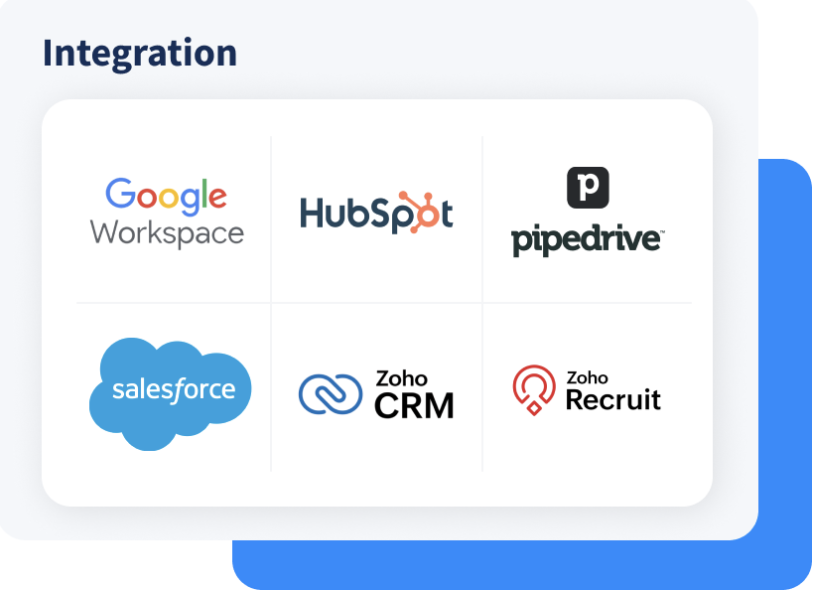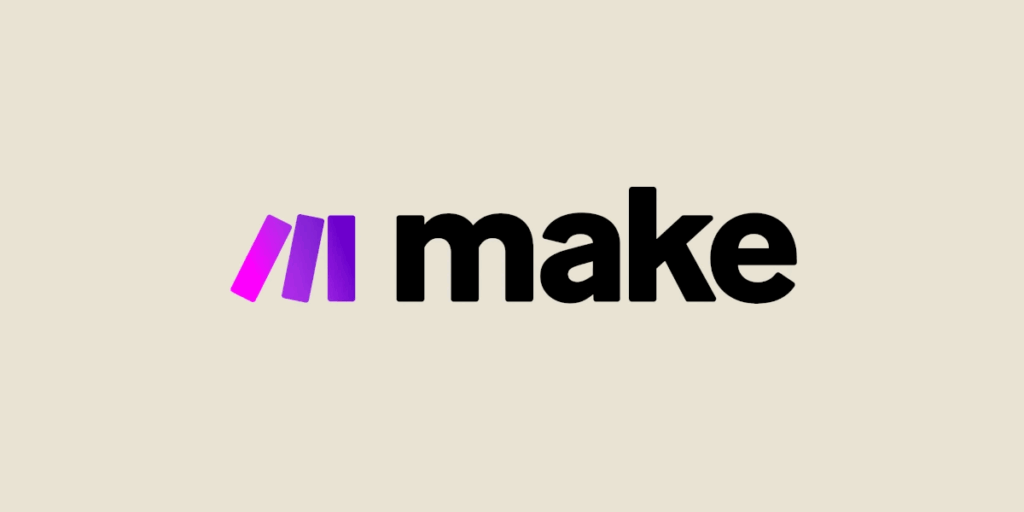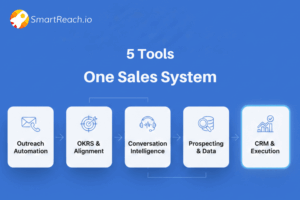Best Workflow Automation Tools: Save 15+ Hours Weekly
Running a small business means wearing many hats: marketing, operations, customer service, and more. Time quickly becomes your most valuable resource.
Recent studies show that small businesses implementing workflow automation see an average 30% reduction in administrative tasks and 25% improvement in customer response times.
For a 10-person team, this translates to reclaiming 12-15 hours per week that can be redirected toward revenue-generating activities.
That’s where workflow automation helps. It handles repetitive tasks automatically, reduces mistakes, and gives you hours back to focus on growth.
Automation tools are now easier and cheaper than ever. You don’t need technical skills or developers to get started. From sending customer emails to processing payments, updating inventory, or syncing data, today’s platforms are designed for beginners and small teams.
With so many choices, picking the right tool can feel overwhelming. Each option has different pricing, features, and integrations. The key is to match tools to your specific workflows and business size.
In this article, we’ll cover the best workflow automation tools for small businesses. We’ll explain how they work, what to look for, and how to fit them into your existing systems for maximum impact.
Why workflow automation matters for small businesses
In a small business, every minute and dollar matters. With limited resources, efficiency is critical, and workflow automation helps make that possible.
According to McKinsey’s 2024 automation report, small businesses implementing workflow automation see average productivity gains of 35% within the first six months.
By automating repetitive tasks like sending emails, updating spreadsheets, or assigning tasks, small businesses can save hours of manual work each week. Automation also reduces human error.
Instead of manually updating client records or sending invoice reminders, automated systems ensure accuracy and consistency with little oversight. This not only boosts productivity but also strengthens customer service and improves team communication.
ROI snapshot for small businesses
Here’s what automation can mean for your bottom line:
For a 5-person service business:
- Administrative time saved: 15 hours/week
- Cost of automation tools: $200/month
- Value of reclaimed time (at $50/hour): $3,000/month
- Net monthly benefit: $2,800
- Annual ROI: 1,680%
Another advantage is scalability. As customer demand grows, manual processes can’t keep up. Automation allows teams to handle more work without adding staff, keeping costs under control while ensuring smooth operations.
Perhaps most importantly, automation frees employees to focus on tasks of higher value. When routine tasks are handled automatically, teams can spend more time on marketing, strategy, and customer relationships. This shift not only drives growth but also keeps employees motivated.
Ultimately, workflow automation is no longer just for large corporations. It’s now an affordable and practical tool that gives small businesses a competitive edge, working smarter, serving customers better, and adapting quickly in today’s fast-paced digital economy.
Key features to look for in a workflow automation tool
Choosing the right workflow automation tool can be tricky, especially with so many options available. But if you know what features to look for, the decision becomes much easier. The ideal tool should not only fit your current needs but also scale as your business grows.
The first thing to consider is ease of use. As a small business, you may not have a dedicated IT team, so the tool should offer a user-friendly interface that allows you to create and manage workflows without technical knowledge. Clear design and drag-and-drop functionality can make a big difference.
Another important factor is integration. Your automation tool should work smoothly with the other platforms you already use, like your email system, CRM, accounting workflow software, or e-commerce platform. The more it can connect, the more time it will save.
Here are some key features to look for:
- User-friendly interface
- Pre-built templates and workflows
- Integration with popular apps (like Gmail, Slack, QuickBooks)
- Customizable triggers and actions
- Detailed analytics and reporting
- Affordable pricing with flexible plans
Security and customer support should also be considered. You’ll want a tool that protects your data and offers timely assistance if something goes wrong.
When you find a platform that checks all these boxes, you’re well on your way to building efficient, reliable workflows.
Sales automation: The highest-impact starting point
While general automation tools handle various business processes, sales automation typically delivers the fastest ROI for small businesses.
The sales process, from lead capture to deal closure, usually involves the most repetitive, time-intensive manual tasks that small teams face.
From my experience helping dozens of small businesses, the biggest surprise is always how much time they didn’t realize they were losing to manual follow-ups.
One client tracked their pre-automation workflow and discovered their sales team was spending 3.5 hours daily on repetitive email tasks.
Why sales automation should be your priority
Marketing agencies using automation report 60% faster client onboarding, while service businesses see 45% improvement in follow-up consistency. For most small businesses, sales follow-up represents the biggest time sink and the highest potential impact from automation.
SmartReach.io specializes in sales engagement automation, offering features specifically designed for sales teams: personalized email sequences, automatic follow-ups based on prospect behavior, CRM integration, and performance analytics. Unlike general automation platforms, SmartReach understands sales workflows and provides templates and triggers optimized for lead nurturing and deal advancement.

Key SmartReach Features for Small Businesses:
- Personalized email sequences that trigger based on prospect actions
- CRM integration with popular platforms like HubSpot and Salesforce
- A/B testing for email templates and subject lines
- Detailed analytics showing open rates, response rates, and conversion metrics
- Time zone optimization to reach prospects at optimal times
For small businesses where sales growth is the primary objective, starting with specialized sales automation often provides clearer ROI than general workflow tools.

A small consulting firm used SmartReach to automate their lead nurturing process, setting up personalized email sequences that triggered based on prospect engagement. This resulted in 40% more qualified leads and allowed their sales team to focus on high-value conversations rather than manual follow-ups.
How to choose the right tool for your business type
Every small business has unique needs and workflows, so there’s no single automation tool that works for everyone. The right choice depends on your industry, team size, and the processes you want to automate.
For service-based businesses, tools that handle client communication, scheduling, and invoicing are often the most useful.
Sales automation platforms like SmartReach.io or general integrations like Zapier can simplify operations without constant manual effort. For e-commerce, automation that syncs orders, manages inventory, and sends shipping updates should take priority.
It’s also important to consider your team’s comfort with technology. Some tools are feature-rich but come with a steep learning curve, while others are simpler and more user-friendly for non-technical teams. Choosing the right balance between power and usability will save time in setup and training.
Budget matters too. Many platforms offer free or low-cost plans, ideal for startups, but you’ll want to make sure the tool can grow with you. The best solution is one that fits your current workflows while allowing room for expansion.
Strategic Implementation for Small Business Leaders:
Consider prioritizing automation for:
- Sales processes showing high potential but low conversion rates
- Customer service workflows where response time impacts satisfaction
- Administrative tasks that require multiple team members
- Recurring processes that scale with business growth
Ultimately, the smartest approach is to evaluate your priorities—processes, team skills, and budget, before committing. The right tool should boost efficiency today and support long-term growth tomorrow.
Zapier

Zapier is one of the most popular workflow automation tools, especially for beginners. Its biggest advantage is connecting thousands of apps, like Gmail, Slack, Google Sheets, and Shopify, without any coding. With Zapier, you create “Zaps” (automated workflows) using a simple step-by-step builder. For example, when a customer fills out a form, Zapier can automatically add them to your email list and notify your sales team.
Zapier also provides hundreds of ready-to-use templates, making setup quick and error-free. This is especially helpful for busy small business owners who want results without a steep learning curve. The platform grows with you, too. The free plan works well for startups, while paid plans unlock advanced features. While not built for very complex automation, Zapier balances ease and power, making it a favorite for small business owners.
“The real power of automation is taking repetitive tasks off your plate so you can focus on the work that grows your business,” says Anna Zhang, Head of Marketing at U7BUY.
Key Highlights:
- Connects thousands of apps without coding
- User-friendly “Zap” builder for custom workflows
- Hundreds of pre-built templates for quick setup
- Free plan available; scalable paid options
- Best for simple-to-moderate automations
Make

Make is a strong choice for small businesses that want more flexibility than basic tools provide. Instead of a step-by-step list, it uses a visual editor where each action appears as a node in a flowchart. This makes it easy to see how data flows across apps.
It’s ideal for multi-step workflows, conditional logic, and advanced automations. You can connect hundreds of popular apps to sync orders, parse form data, or push information into a CRM, all without coding.
Cost is another plus. The free plan includes robust features, and paid tiers remain affordable. While the interface may look complex at first, it quickly becomes intuitive once you get hands-on.
If you want creative control over your automations and don’t mind a short learning curve, Make offers power and affordability in one package. “When you can see your workflows laid out visually, it’s easier to understand your processes and find smarter ways to improve them,” says Leigh McKenzie, a Community Advocate at Traffic Think Tank.
Key Highlights:
- Visual flowchart-style editor for building workflows
- Handles complex, multi-step automations
- Integrates with hundreds of business apps
- Feature-rich free plan and budget-friendly paid tiers
- Best for teams wanting more control and flexibility
HubSpot

HubSpot is a powerful platform that combines marketing, sales, and customer service automation in one system. Its built-in CRM makes it easy to track every customer interaction and create personalized journeys from first touch to conversion.
For small teams, HubSpot’s marketing tools stand out. You can set up automated workflows to send welcome emails, run drip campaigns, and segment audiences by behavior. This ensures consistent communication without the need for constant manual effort.
On the sales side, HubSpot automates deal tracking, reminders, and follow-ups. Sales reps get real-time alerts when a contact opens an email or visits the website, helping them respond at the right moment. The system also updates pipelines and assigns tasks automatically. HubSpot’s clean, beginner-friendly interface makes it accessible to non-technical users. While advanced features require paid plans, the free version still delivers strong value. For small businesses wanting a single tool for CRM, email marketing, and sales automation, HubSpot is a smart choice.
“The best automation tools don’t just save time, they help businesses stay consistent in how they connect with customers,” says Jesse Morgan, Affiliate Marketing Manager at Event Tickets Center.
Key Highlights:
- Built-in CRM for connected customer data
- Automated email campaigns and audience segmentation
- Sales automation with real-time notifications
- Clean, user-friendly interface
- Free plan available, paid tiers for advanced features
Monday.com

Monday.com is one of the most adaptable workflow automation platforms, making it a great fit for small businesses that need more than basic task management. Its strength lies in flexibility, whether in marketing, HR, sales, or customer service, the platform can be shaped around your team’s processes. Users can also look for a Monday.com discount by choosing annual billing to save on the subscription cost
Users create visual boards to map workflows, then add automations for tasks like updates, alerts, or assignments. For example, marking a task as complete can instantly notify a manager or trigger the next step in a project. These automations keep work moving smoothly without extra effort.
Small teams can start simple with pre-built templates, such as content calendars or onboarding checklists, and expand as needs grow. The automation builder is beginner-friendly, using plain language and dropdowns instead of complex coding.
“Automation works best when it blends into everyday tools, helping teams stay focused without adding extra steps,” says Alex Vasylenko, Founder of Digital Business Card.
Another big plus is integration. Monday.com connects with Slack, Google Drive, Outlook, and more, ensuring your workflows span multiple apps smoothly. For teams wanting both structure and flexibility, Monday.com delivers a scalable, user-friendly solution.
Key Highlights:
- Highly customizable boards and workflows
- Easy-to-set automation for routine tasks
- Pre-built templates for quick setup
- Integrates with popular business tools
- Scales with your team as needs grow
Integrating automation with existing tools
One of the greatest strengths of workflow automation is its ability to connect the tools you already use. Most small businesses rely on a mix of apps, email platforms, CRMs, project management software, and communication tools. Automation acts as the bridge, ensuring data flows smoothly between them without manual effort.
For instance, if you use Mailchimp and Shopify, automation can sync customer data in real time. A new purchase can trigger automatic updates to a segmented email list, eliminating spreadsheets. Similarly, leads from a website form can be sent straight to your CRM and assigned to the right sales rep instantly.
Sales automation platforms like SmartReach integrate with existing CRMs, email platforms, and lead generation tools, ensuring your sales process remains connected while becoming more efficient. The platform’s CRM integration capabilities mean that prospect interactions, email opens, and responses automatically sync with your existing customer database.
The key to making integration successful is compatibility. Many automation platforms support popular tools like Slack, Google Workspace, QuickBooks, and Zoom. For less common apps, custom API connections may be possible.
“Before diving in, map out your workflows to see where automation can make the biggest impact,” says Xinrun Han, Marketing Manager at Mailgo. Focus on repetitive actions that can be connected across systems. A well-integrated setup reduces errors, eliminates silos, and saves time. Done right, automation doesn’t just handle tasks, it transforms how your team collaborates and operates day to day.
Common challenges & how to overcome
While workflow automation offers many benefits, small businesses often face challenges when trying to implement it effectively. These issues can slow down adoption or even lead to frustration if not addressed early. Fortunately, most of these obstacles are easy to overcome with the right approach.
One of the most common problems is over-automation. Trying to automate everything at once can make processes confusing and lead to unexpected errors. The biggest mistake I see small businesses make is trying to automate everything at once. Start with your most time-consuming manual process—often lead follow-up—and perfect that before expanding.
Another challenge is getting team members on board. If employees aren’t familiar with the new systems, they may resist using them. Providing training, choosing intuitive tools, and involving your team in the setup process can go a long way in easing this transition.
Here are a few more common issues and tips to address them:
- Integration failures – Always test workflows before going live to avoid data mismatches
- Redundant automations – Review your workflows regularly to eliminate overlaps
- Lack of monitoring – Set up alerts or reports to track automation performance
- Tool fatigue – Avoid using too many tools; consolidate when possible
By approaching automation thoughtfully and strategically, you can avoid common pitfalls and build systems that truly support your business goals.
Real-life success stories of small businesses using automation
Real-world examples show how powerful workflow automation can be for small businesses, even with limited resources. The right tools save time, reduce errors, and free teams to focus on growth.
Marketing agency success story
A boutique marketing agency used Zapier to automate lead capture and onboarding. When a client filled out a contact form, the data was added to their CRM, a welcome email was sent, and a Trello task was created for the sales team. This cut admin work by 60% and improved response time dramatically.
E-commerce integration success
An e-commerce store integrated Make with Shopify and Google Sheets to sync orders in real time. Instead of manually updating spreadsheets, the automation handled inventory and order records instantly, preventing costly mistakes.
Sales automation case study
CASE STUDY: Local Real Estate Agency
- Challenge: 25 hours/week spent on lead follow-up
- Solution: SmartReach sales automation with personalized sequences
- Results after 90 days:
- 300% increase in qualified leads
- 50% reduction in manual tasks
- $180K additional revenue attributed to improved follow-up
Service business transformation
Service businesses also benefit significantly. A coaching business combined Calendly and Mailchimp to send session reminders, follow-ups, and review requests automatically. This allowed the owner to focus on clients instead of repetitive admin tasks.
These examples prove automation isn’t just for big companies. With tools like Zapier, Make, SmartReach, or Calendly, even small businesses can simplify daily work, scale faster, and stay focused on what matters most, delivering value to customers.
What is the best workflow automation tool for small businesses?
The best workflow automation tool depends on your specific business needs and processes. For general automation connecting multiple apps, Zapier offers the easiest starting point with thousands of integrations.
For more complex visual workflows, Make provides advanced capabilities at affordable prices.
If your priority is sales growth, SmartReach delivers specialized sales automation features that general tools can’t match. For businesses wanting an all-in-one solution, HubSpot combines CRM, marketing, and sales automation in one platform.
How much can small businesses save with automation?
Small businesses typically see 25-35% productivity improvements within six months of implementing automation.
For a 5-person team, this translates to 12-15 hours saved weekly, worth approximately $2,800 monthly in reclaimed productive time at standard hourly rates.
Which automation tool is easiest for beginners?
Zapier is widely considered the most beginner-friendly automation platform, offering simple step-by-step workflows, hundreds of pre-built templates, and no coding requirements. Its “Zap” builder uses plain language and connects with thousands of popular business apps.
Conclusion
Workflow automation is no longer just for big companies—it’s now essential for small businesses too. The right tools help save time, reduce errors, and make the most of limited resources. From task management and client communication to lead generation and sales follow-ups, automation can simplify everyday operations.
What’s exciting is how accessible these tools have become. Platforms like Zapier, Make, HubSpot, Monday.com, and specialized solutions like SmartReach are designed with small teams in mind. They’re user-friendly, scalable, and flexible enough to fit different industries and budgets.
The best approach is to start small. Identify one or two repetitive tasks and automate them often beginning with sales follow-up delivers the highest ROI. Once you see the impact, you can expand your automation strategy step by step.
At its core, automation isn’t about replacing people it’s about giving them more time. By handling routine work automatically, your team gains time to focus on meaningful, creative, and strategic tasks that drive growth.



